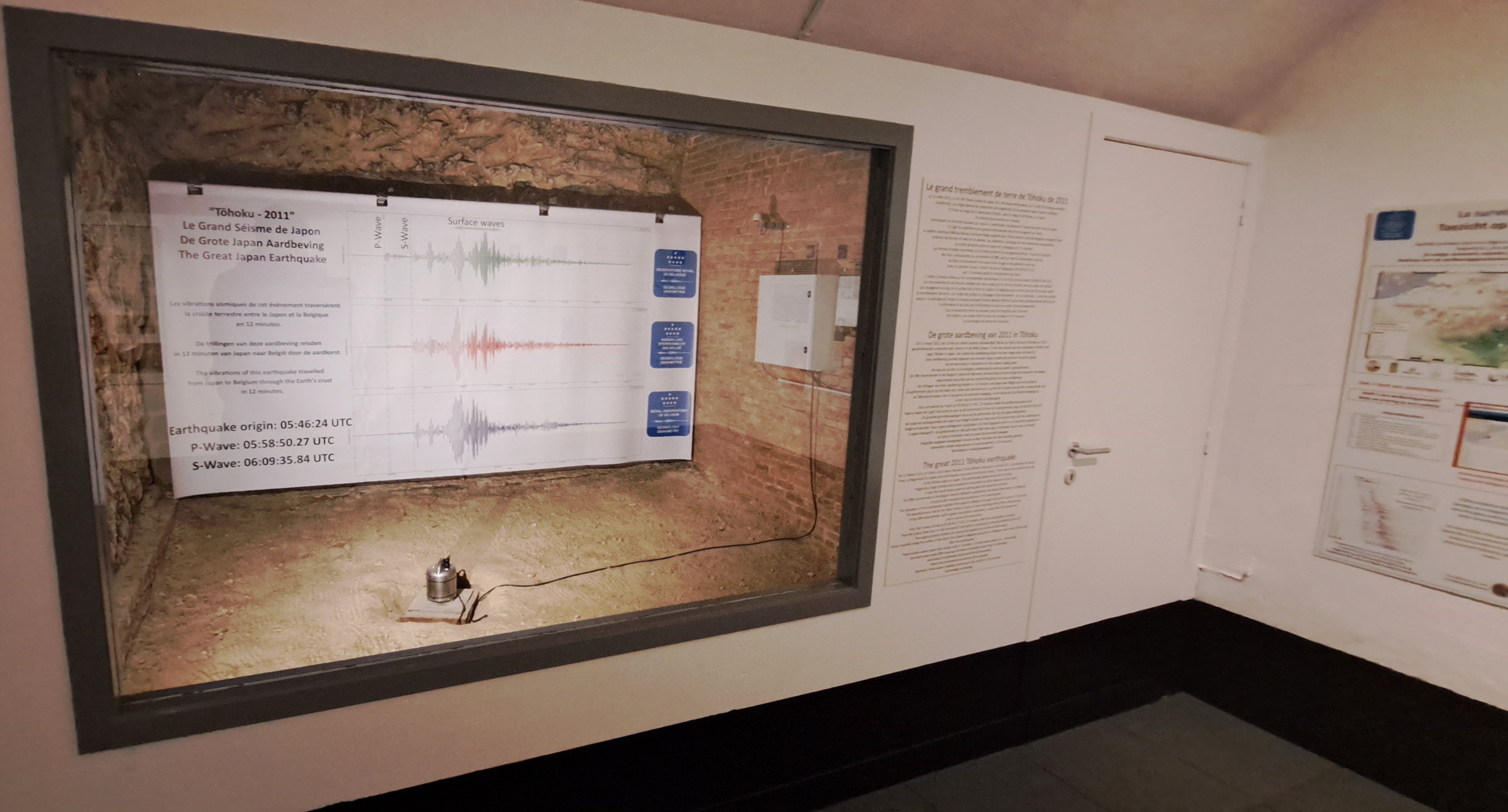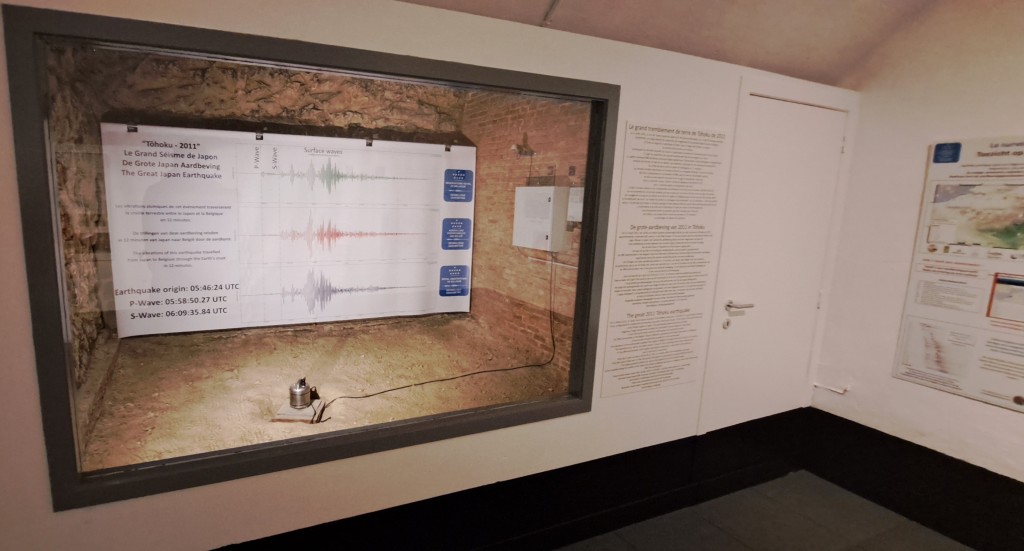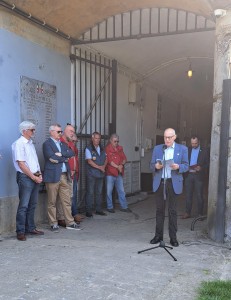Permanent exhibition on seismology at Fort Eben-Emael
Thanks to a fantastic collaboration with the non-profit organisation Fort Eben-Emael, the staff of the Seismology and Gravimetry service of the Royal Observatory of Belgium were able to open a new fascinating exhibition on seismology on 27 June 2024.
Ever since 1 April 1986, a seismograph (= the combination of a seismometer and a digital recording system) in a hidden room of Fort Eben-Emael has been continuously recording all seismic activity in and around Belgium. This seismometer is known internationally as the station EBN (code BE.BEBN) and its recordings and maintenance are managed by the Royal Observatory of Belgium (ROB), one of the oldest federal research institutes in our country.
The station EBN is one of the stations in the Belgian Seismic Network with the longest digital recordings. Before installation of the station EBN, a seismometer was installed in the marl caves in Kanne for several months. However, the fortress was preferred due to the vision of long-term cooperation between the ROB and the non-profit organisation Fort Eben-Emael (at that time still managed by the army).
EBN’s location was chosen because the fort is located close to the Roer Valley Rift System. This rift system stretches across the borders of Belgium, the Netherlands and Germany and is the most seismically active zone around Belgium. Groundbreaking palaeoseismology from the ROB has shown that the border faults of this rift system have been active for millions of years, with the last major earthquake to breach the surface being about 3,000 years ago. Hence, proper and close monitoring of its activity is needed.
Via a pillar, the EBN seismometer is brought into direct contact with the marl bedrock, in which the fort was excavated. This direct contact is necessary to accurately record vibrations and better ‘listen to’ the earth. Over time, EBN’s seismometer has been changed several times following technological developments. Since January 2024, a TH-120s broadband seismometer has been operating, which is extra sensitive to low-frequency vibrations emitted by distant earthquakes.
In 38 years, using the EBN seismometer, no fewer than 1032 local earthquakes in and around Belgium, and more than 5,000 earthquakes worldwide were measured by seismologists of the ROB. These recordings provide valuable data for scientific research, improving understanding of the seismic activity of the Roer Valley Rift, Belgium and its border regions. Moreover, with the open sharing of global EBN recordings through international platforms, the ROB contributes to international cooperation in seismology to improve the location and knowledge of global seismic activity. Besides natural earthquakes, earthquakes induced by humans, quarry blasts and sometimes dredging activities on the Meuse are also measured.
Until the end of 2023, the chamber in which the seismometer is installed remained closed to the public, but not anymore!
With united efforts of the ROB seismology staff and volunteers of the Fort Eben-Emael, a new room was set up in which the seismometer will be on permanent display. The visitors can take a unique look at the instrument and learn about seismology and earthquakes. The Royal Observatory of Belgium expresses its sincere gratitude to the non-profit organisation Fort Eben-Emael for this unique initiative! Come and visit the fort!
During the holidays period (between the 1st of June and the 30th of September): the Fort Eben-Emael is open to the public from Tuesday to Sunday between 10:00 and 17:00 (last entry at 14:30).
Address: Fort Eben-Emael, rue du Fort 40 – B-4690 Eben-Emael / Bassenge
More information for the visit: https://fort-eben-emael.be/en/



